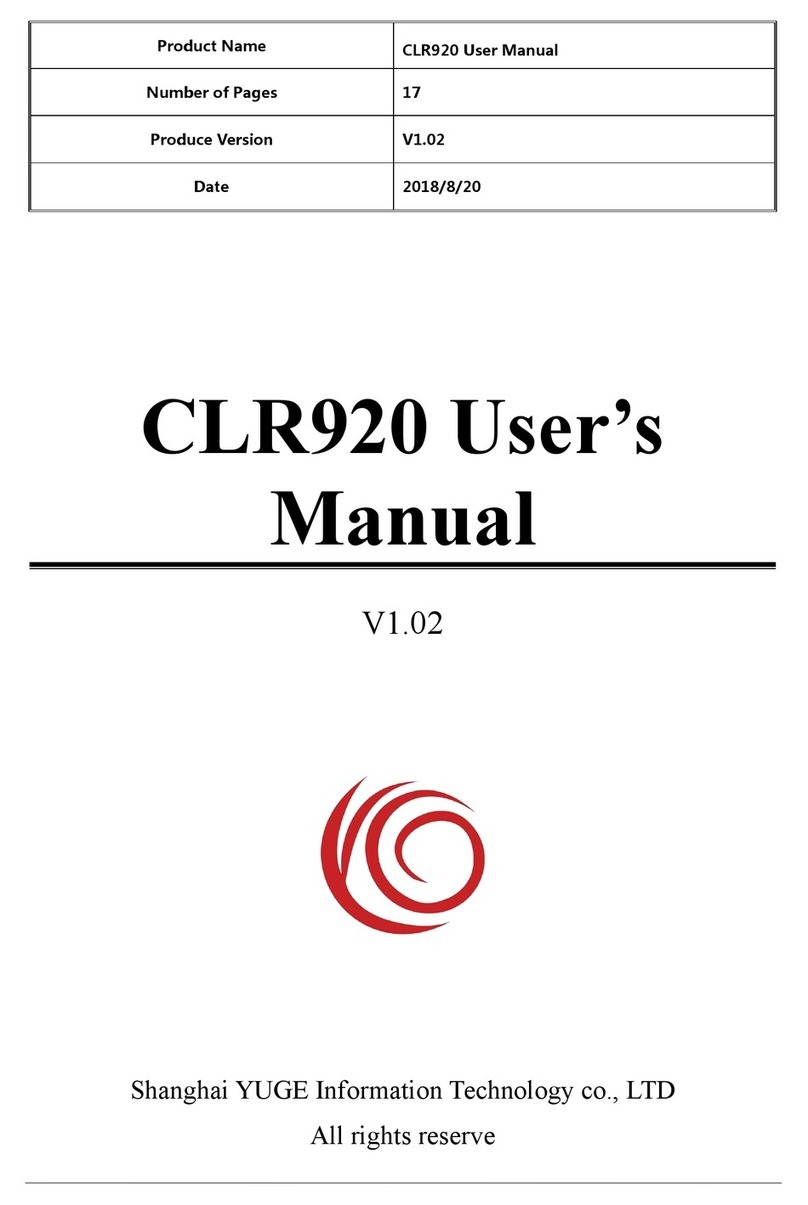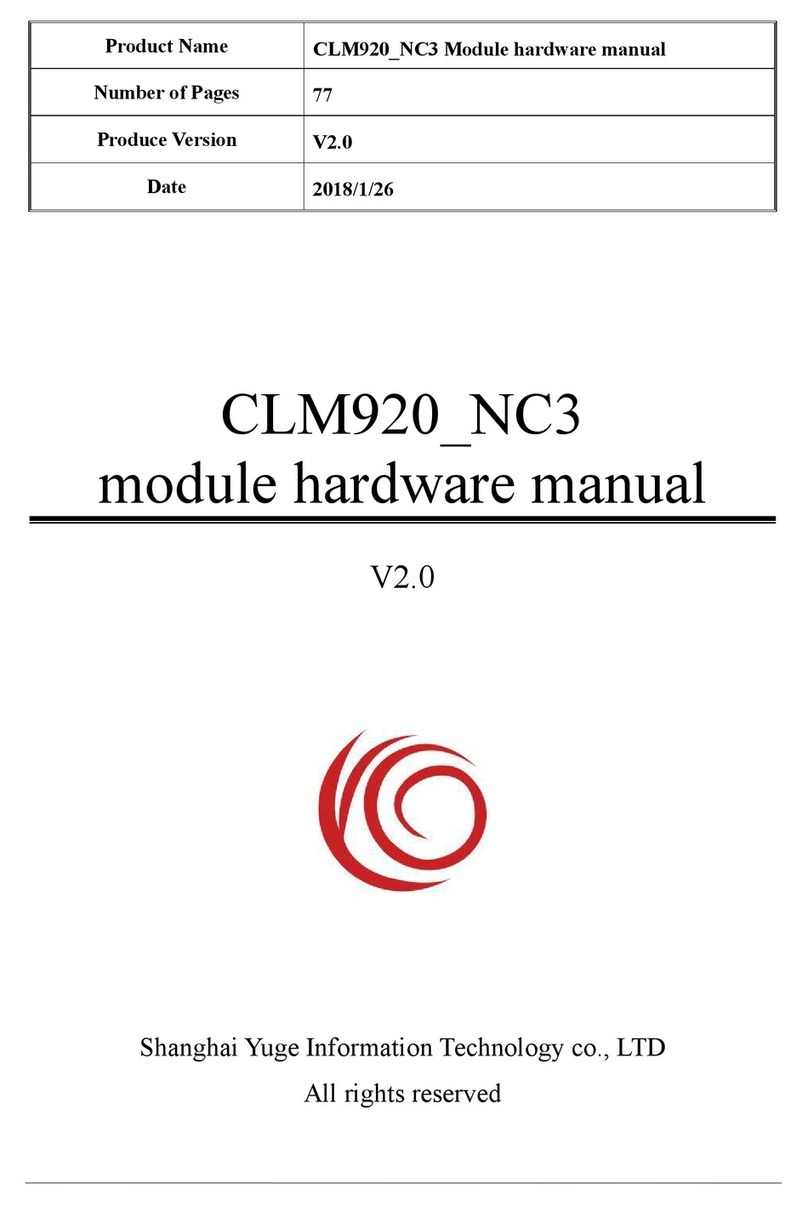
LPM2100 mg NB Module Hardware User Guide
Shanghai Yuge Information Technology Co., Ltd.
Figure 2-1 Functional block diagram of the LPM2100 mg series module...........................- 10 -
Figure 3-1 LPM2100 mg pin assignment diagram...............................................................- 12 -
Figure 3-2 VBAT power supply........................................................................................... - 15 -
Figure 3-3 VDD_EXT power output timing diagram.......................................................... - 16 -
Figure 3-5 boot timing diagram............................................................................................- 17 -
Figure 3-6 Mechanical button boot...................................................................................... - 17 -
Figure 3-7 Shutdown timing diagram...................................................................................- 18 -
Figure 3-8 Reset reference circuit........................................................................................ - 18 -
Figure 3-9 Reset timing diagram..........................................................................................- 19 -
Figure 3-10 Full-featured serial port design.........................................................................- 20 -
Figure 3-11 UART serial port design................................................................................... - 20 -
Figure 3-12 UART level conversion circuit......................................................................... - 21 -
Figure 3-13 PSM power saving technology......................................................................... - 22 -
Figure 3-14 DRX power saving technology.........................................................................- 22 -
Figure 3-15 eDRX power saving technology.......................................................................- 23 -
Figure 3-16 SIM circuit design.............................................................................................- 24 -
Figure 3-17 SIM card hot swap detection circuit*............................................................... - 25 -
Figure 3-18 SPI read timing diagram................................................................................... - 26 -
Figure 3-19 SPI write timing diagram..................................................................................- 26 -
Figure 3-20 I2C interface reference circuit.......................................................................... - 27 -
Figure 3-21 Network indicator circuit diagram....................................................................- 28 -
Figure 3-22 WAKEUP wake-up module reference circuit................................................... - 29 -
Figure 3-23 WAKEUP_OUT wake up host......................................................................... - 29 -
Figure 4-1 Main antenna matching circuit diagram............................................................. - 31 -
Figure 4-2 Bluetooth antenna matching circuit diagram......................................................- 31 -
Figure 4-3 Complete structure of the microstrip line........................................................... - 32 -
Figure 4-4 Reference ground is the third layer microstrip transmission line structure........ - 32 -
Figure 4-5 Complete structure of the strip line.................................................................... - 32 -
Figure 4-6 RF connector size chart...................................................................................... - 33 -
Figure 4-7 Antenna connector matching plug diagram........................................................ - 33 -
Figure 6-1 Appearance of the LPM2100 mg series module.................................................- 39 -
Figure 6-2 Front view and side view of the LPM2100 mg series module (unit MM)......... - 39 -
Figure 6-3 Bottom view of the LPM2100 mg series module (unit MM).............................- 40 -


































